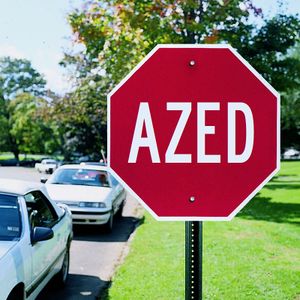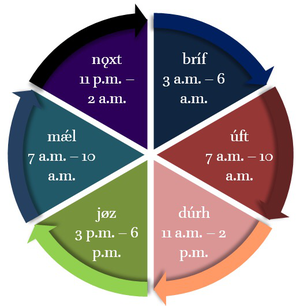Emòn
| Emone Emòn | |||||||||||||||||||||||||||||||||||||||||||||||||||||
|---|---|---|---|---|---|---|---|---|---|---|---|---|---|---|---|---|---|---|---|---|---|---|---|---|---|---|---|---|---|---|---|---|---|---|---|---|---|---|---|---|---|---|---|---|---|---|---|---|---|---|---|---|---|
| Type | |||||||||||||||||||||||||||||||||||||||||||||||||||||
| Alignment | |||||||||||||||||||||||||||||||||||||||||||||||||||||
| Head direction | |||||||||||||||||||||||||||||||||||||||||||||||||||||
| Initial | Mixed | Final | |||||||||||||||||||||||||||||||||||||||||||||||||||
|
| |||||||||||||||||||||||||||||||||||||||||||||||||||||
| Primary word order | |||||||||||||||||||||||||||||||||||||||||||||||||||||
| Tonal | |||||||||||||||||||||||||||||||||||||||||||||||||||||
| No | |||||||||||||||||||||||||||||||||||||||||||||||||||||
| Declensions | |||||||||||||||||||||||||||||||||||||||||||||||||||||
| No | |||||||||||||||||||||||||||||||||||||||||||||||||||||
| Conjugations | |||||||||||||||||||||||||||||||||||||||||||||||||||||
| No | |||||||||||||||||||||||||||||||||||||||||||||||||||||
| Genders | |||||||||||||||||||||||||||||||||||||||||||||||||||||
| 0 | |||||||||||||||||||||||||||||||||||||||||||||||||||||
| Emone | |
|---|---|
| Emòn | |
| Pronunciation | [/ˈemʲɔn/] |
| Created by | Guillaume Boucher |
| |
Emone (Emòn, is a Germanic language created by Guillaume Boucher to be a language spoken by the native inhabitants of Anerrot, an archipelago and nation encompassing such to the northwest of Ireland.
The language, while being ultimately Germanic, is influenced by Celtic (more commonly by Goidelic), North Germanic languages, and Ariadna's native idiolect of Bulgarian. Thus making the language a posteriori, with a defined system of evolution throuğ Old & Middle Anrish.
History
Etymology
The name "Anrish" is derived simply from a combination of the Anrish endonym Anr + -ish in English. Similarly, Anerrot is derived from a compound in Anrish of Anr + ort, translating approximately to "the place of the Anrish".
Phonology
Latin
The Latin alphabet as a part of the language was introduced by Irish & Norse Christian missionaries during the Middle ages. Because of the ill-suiting of Irish phonology & its Latin to the language, coupled with the reaction to attempted colonization, their influence was left minimal, with the Nordic innovations being much better suited, allowing the written language to appear "Germanic-esque" in a sense. Another major factor in the Romanization of Anrish was the later advent of the printing press, created exclusively for Latin-based writing systems.
Consonants
| Labial | Coronal | Dorsal | Glottal | ||
|---|---|---|---|---|---|
| Nasal | m | n | ɲ | ||
| Stop | voiceless | p | t | k | |
| voiced | b | d | ɡ | ||
| Fricative | voiceless | f | s | ɕ | h[note 1] |
| voiced | v | z[note 1] | ʑ | ||
| Trill | r | ʀ[note 2] | |||
| Approximant | ɥ[note 2] | j | w[note 2] | ||
Vowels
| Front | Central | Back | |
|---|---|---|---|
| Hiğ | ɪʏ | u | |
| Mid | eø | oʌɔ | |
| Low | a | ɑ |
Orthography
| Hard Letter | A | Â | B | D | DD | E | F | G | H | I | K | M | N | O | OO | P | R | S | T | U | UU | V | W | Y | Z |
|---|---|---|---|---|---|---|---|---|---|---|---|---|---|---|---|---|---|---|---|---|---|---|---|---|---|
| Sound | a | ɑ | b | d | r | e | f | g | h | ɪ | k | m | n | ɔ | o | p | ʀ | s | t | ʌ | ø | v | w u | ʏ | z |
| Soft Letter | À | Ầ | È | Ì | Ò | ÒO | S̀ | Ù | ÙU | Ẁ | Ỳ | Z̀ | |||||||||||||
| Sound | ʲa | ʲɑ | ʲe | ʲɪ | ʲɔ | ʲo | ɕ | ʲʌ | ʲø | ʲu | ʲʏ | ʑ |
Prosody
Stress
Intonation
Phonotactics
Syllable Structure: (C)(r)V(C)2
Where:
- C = Consonant
- r = /r/
- V = Vowel
- An epenthetic short vowel must occur between /r/ and a following labial in the coda.
- Truely voiceless consonants may only occur in initial position.
- If there is a /r/ in initial position, only /p/, /t/, /f/ may precede it.
- /r/ is often realized as [ɾ].
- /a/ is often realized as [ä], [ɐ̞].
- /f/, /b/ often mutate into variations of /v/.
- /pr/, /tɬ/, /tr/, /fr/, /fs/, /fd/, /ŋg/, /ŋʀ/, /ŋd/, /kʀ/, /rf/, /ɬɡ/, /ɬd/, /mb/, /mr/, /md/, /nr/, /nd/, /nt͡s/, /ʀɡ/, /ɹd/, /ɹt͡s/, /ʀs/, /ʀt/, /ʀt͡s/ are the only clusters that may occupy the coda.
- The coda of the syllable is often medial, and is synonymous with such for the purposes of this article.
- /hl/, /ðl/ cannot occur and must mutate into /ɬ/.
- Laterals cannot occur near labials.
Morphophonology
Morphology
Nouns
Unlike many other Germanic languages, Anrish has a 3rd-dimensional declension system consisting of a singular/plural number-distinction, a definiteness-distinction, and a case-distinction of only common, dative, & genitive. The properties of noun-declension are then divided into the 3 categories of a-stem, u-stem, & i-stem.
Adjectives
Firstly, it must be noted that adverbs are not a separate part of speech from adjectives in Anrish. Most adjectives are sufficized with either ‹-a› or ‹-e›
Aside from certain independent adjectives, adjectives are often either considered to be a conjugation of its equivalent verb and vice-versa, with contrasting causative and predicative verb equivalents where the adjective is considered to be the attributive conjugate. Adjectives that are derived from nouns are often simply a mutation on the root plus the addition of an adjective-forming -éa suffix, and lack verbal & comparative forms because of this.
Comparatives are typically derived by the addition of an ‹-ra› or /-sa/ to a mutation on the final consonant, where /k/, /m/, /n/, /p/, /t/ will give ‹-r›, and /ð/, /f/, /l/, /ɬ/, /r/, /s/ will give /-s/. The exceptions to this being a lone ‹s›, which will give ‹-rra› /-ɹa/. An uncomparativized adjective ending in ‹-a› will undergo i-umlaut to the primary vowel, particularly in disyllabic words. An interesting feature of this law is that non-syllabic vowels are considered to be a consonant for the purposes of adding the comparative-former to, but revert to a syllabic state upon the addition of the consonant.
Verbs
With conjugation divided according to classes, an arbitraty weak/strong distinction, and a impersonal/semi-transitive distinction, Anrish has a 4th-dimensional conjugation system consisting of an active/passive voice-distinction, a 1/2/3 form-distinction, a non-past/past tense-distinction, and a subjunctive/indicative mood-distinction. Regarding the form-distinction in particular, the 3 forms correspond directly to a person-distinction, but are differentiated because of sound-changes merging archaic forms, as follows:
| Singular | Plural | ||
|---|---|---|---|
| 1st person | in | form 1 | |
| ex | form 1 | form 3 | |
| 2nd person | form 2 | ||
| 3rd person | form 2 | form 3 | |
Aside from normal conjugation, verbs may also be declined as verbal nouns, often restricted to singular number.
Syntax
Constituent order
The constituent order of words in any given sentence is typically object-verb-subject (OVS).
Noun phrase
All relative clauses and modifiers typically precede the noun as the head of an argument.
Verb phrase
Sentence phrase
Dependent clauses
Morphosyntactic aliğnment
It must be noted that the language is conventionally considered to be nominative-accusative in the sense that it's Centum and not ergative-absolutive. This is due to the fact that the language does not decline nouns according to aliğnment, rather thus placing the language more in the category of direct aliğnment; a situation similar to that of English.
Example texts
- Ishtar spoke to her father - Eð ætene púruð Ishtar
Swadesh list
Leipzig-Jakarta list
| Leipzig-Jakarta List | ||||
|---|---|---|---|---|
| Rank | Meaning | Anrish | ||
| 1 | fire | |||
| 2 | nose | næf | ||
| 3 | to go | aðá | ||
| 4 | water | lau | ||
| 5 | mouth | múl | ||
| 6 | tongue | teng | ||
| 7 | blood | dør | ||
| 8 | bone | gnok | ||
| 9 | 2sg pronoun (you) | ú | ||
| 10 | root | |||
| 11 | to come (move) | |||
| 12 | breast | |||
| 13 | rain | ras | ||
| 14 | 1sg pronoun (I) | mea | ||
| 15 | name | |||
| 16 | louse (Phthirapteron) | gnyt | ||
| 17 | wing | |||
| 18 | flesh/meat | gorút | ||
| 19 | arm/hand | gǫnt | ||
| 20 | fly (insect, Dipteron) | |||
| 21 | night (time of day) | éft | ||
| 22 | ear | hlús | ||
| 23 | neck | gaz | ||
| 24 | far (prep.) | |||
| 25 | to do/make | |||
| 26 | house/structure | |||
| 27 | stone/rock (singular object) | |||
| 28 | bitter | |||
| 29 | to say | jeuá | ||
| 30 | tooth | |||
| 31 | hair | |||
| 32 | big | sóra | ||
| 33 | one (number) | nau | ||
| 34 | who? | fa | ||
| 35 | 3sg pronoun (they) | y | ||
| 36 | to hit/beat | |||
| 37 | leg/foot | løu | ||
| 38 | horn | |||
| 39 | this (pron.) | hæ | ||
| 40 | fish | |||
| 41 | yesterday | |||
| 42 | to drink | |||
| 43 | black (color) | |||
| 44 | navel | |||
| 45 | to stand | |||
| 46 | to bite | |||
| 47 | back (body-part) | hrý | ||
| 48 | wind | |||
| 49 | smoke (substance) | |||
| 50 | what? | fæ | ||
| 51 | child (kin term) | eoð | ||
| 52 | egg | neik | ||
| 53 | to give | dá | ||
| 54 | new (adj.) | nyøa | ||
| 55 | to burn (intr.) | |||
| 56 | not (adj./adv.) | è | ||
| 57 | good | faurha | ||
| 58 | to know | cuná | ||
| 59 | knee | |||
| 60 | sand | |||
| 61 | to laugh | cioké | ||
| 62 | to hear | |||
| 63 | soil | |||
| 64 | leaf | felh | ||
| 65 | red (color) | |||
| 66 | liver (body-part) | |||
| 67 | to hide | |||
| 68 | skin/hide | |||
| 69 | to suck | |||
| 70 | to carry | |||
| 71 | ant (Formid) | |||
| 72 | heavy | |||
| 73 | to take | |||
| 74 | old | |||
| 75 | to eat | etá | ||
| 76 | thigh | |||
| 77 | thick | bynue | ||
| 78 | long (spacially) | hlanga | ||
| 79 | to blow | |||
| 80 | wood | |||
| 81 | to run | |||
| 82 | to fall | |||
| 83 | eye (body-part) | où | ||
| 84 | ash | |||
| 85 | tail | |||
| 86 | dog | |||
| 87 | to cry/weep | |||
| 88 | to tie | |||
| 89 | to see | heuá | ||
| 90 | sweet | |||
| 91 | rope | |||
| 92 | shade/shadow | |||
| 93 | bird | jarp | ||
| 94 | salt | halá | ||
| 95 | small | píue | ||
| 96 | wide | jona | ||
| 97 | star | tonu | ||
| 97 | in | bì | ||
| 99 | hard (materially) | |||
| 100 | to crush/grind | |||

